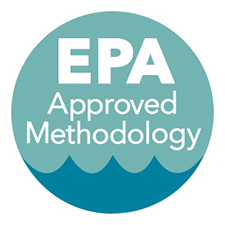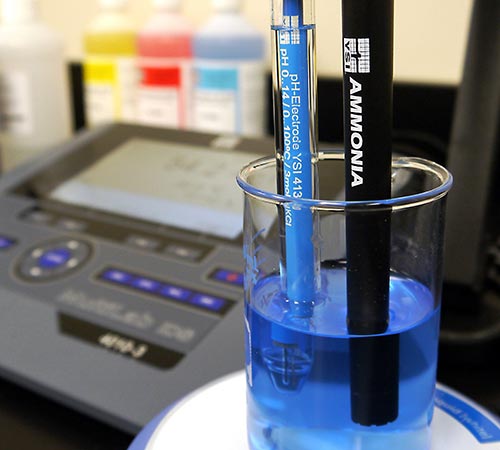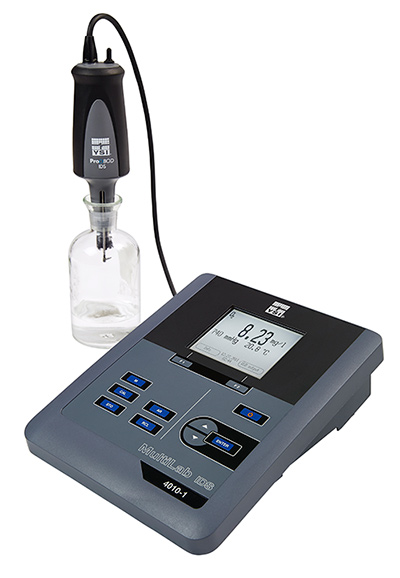What Does EPA Approved Method Mean?
We’ve all heard that test methods used for compliance reporting in drinking water and wastewater plants should (must!) be approved by the Environmental Protection Agency (EPA), but what does that actually mean?
To keep it simple, municipalities and other entities must comply with their permit under the Clean Water Act (CWA) and the Safe Drinking Water Act (SDWA) before water leaves their facility. These major acts were passed in order to protect the health of humans and our nation’s water supply.

Passage of the CWA and SDWA are pivotal events in the history of environmental health.
Who Creates Analytical Methods?
Not every analytical test can be used for compliance reporting. A major part of the EPA’s responsibility is to identify test methods that are scientifically valid. Any measurement recorded for the purpose of compliance reporting must follow a method approved by the EPA.
The EPA’s approved test methods for wastewater analysis are listed in USA Federal Register 40 CFR Part 136, while methods for drinking water analysis can be found in 40 CFR Part 141. The EPA periodically releases updates to the list of approved methods.
Although some approved analytical methods originated from the EPA, the EPA commonly approves methods developed by other organizations. Perhaps the most well-known source of methods is Standard Methods for the Examination of Water and Wastewater, which is a joint publication of the American Public Health Association (APHA), the American Water Works Association (AWWA), and the Water Environment Federation (WEF).
Additional sources of EPA approved methods include ASTM International and the United States Geological Survey (USGS). Other methods have been created by instrument manufacturers and approved by the EPA for use.
The Method Requires That Exact Instrument…Or Does It?
A method provides several important pieces of information. For one, it typically outlines the steps to preparing standards as well as sample collection and preparation. A method also details the type of instrument and/or sensor technology required for analysis. This is where confusion most commonly occurs.
Methods often make reference to a particular brand of instrument and/or sensor that uses the methodology being described. Sometimes, people confuse an approved method with approved instrumentation and think the specific instrument mentioned in the method is the only one that can be used for compliance reporting – this is incorrect!
The fact is that you just need to use an instrument that uses equivalent technology. Any instrument that utilizes the methodology defined in the EPA approved method can be used for compliance reporting.
An excellent example is a gas-sensing ammonia ISE used by many wastewater treatment plant labs for compliance reporting of ammonia. The EPA approved Standard Method (4500-NH3 D. or E.) does mention a specific ammonia sensor, but it also indicates any equivalent ammonia ISE (e.g. YSI TruLine Ammonia ISE) can be used for compliance reporting.
There is no possible way for the EPA to keep up with products and model numbers from the manufacturer's so they approve the methodology - it's up to the manufacturers to develop technology that follows this methodology if they want to be compliant with the approved EPA methods.

The YSI TruLine Ammonia ISE used with the YSI MultiLab 4010-3 to measure ammonia. This is an EPA approved method of determining ammonia concentration for wastewater compliance reporting.
Another great example is an optical dissolved oxygen (DO) sensor that is used for the determination of biochemical oxygen demand (BOD) and carbonaceous biochemical oxygen demand (CBOD). There are two EPA approved methodologies for the determination of BOD and CBOD with an optical DO sensor, both of which were created by different instrument manufacturers. Although YSI isn’t one of those manufacturers listed, our optical DO sensors with a stir bar (YSI ProOBOD) follow both methods, so YSI’s ProOBOD sensor is completely compliant with the stated EPA methods.

The YSI ProOBOD optical DO sensor features a stir bar and can be used for wastewater compliance reporting of DO, BOD and CBOD. This sensor is available for the YSI MultiLab (4010-1 shown here; 4010-2 and 4010-3 also available), ProSolo, and ProDSS.
The Method Isn’t Clear
The wording of the EPA approved method can also lead to confusion, with individuals interpreting the equipment requirements differently.
As an example, a common misconception in Ohio is that a fluoride ISE must have a separate reference half-cell and sensing half-cell when analyzing drinking water – see the Ohio EPA Laboratory Manual for Chemical Analysis of Public Drinking Water (this is a pdf download).
However, a combination fluoride ISE (e.g. YSI TruLine Fluoride ISE), which combines these half cells into one electrode for convenience, can absolutely be used at Ohio drinking water plants for compliance reporting.

The combination YSI TruLine Fluoride ISE can be used for compliance reporting of fluoride.
Helpful Tools
To help you choose instruments and sensors that utilize EPA approved methodology, we have put together an overview of EPA Approved Methods and YSI Instrumentation. This provides a list of important parameters, EPA approved methods, and the corresponding instrumentation YSI offers.

Please feel free to contact YSI if you have any questions regarding EPA approval information.
Additional Blog Posts of Interest
Dissolved Oxygen Meters Q&A | The Ultimate List
Do You Know How to Select the Right Water Quality Instrument?
YSI Calibration Solutions and Buffers Expiration Times
What is Affecting Your Dissolved Oxygen Measurements? Part 1 of 4